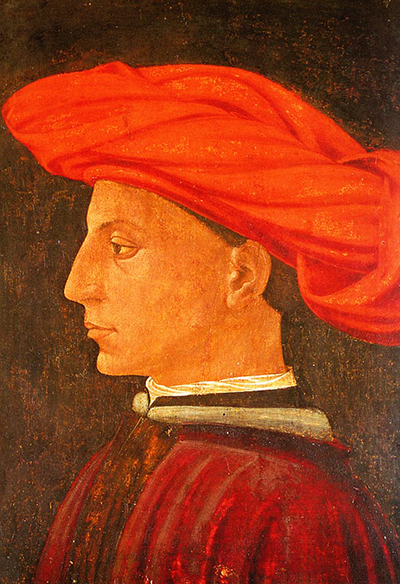The captivating painting by renowned artist Masaccio showcases an impeccable attention to detail that up rises an array of artistry creating the Renaissance Era
Masaccio showcases the extraordinary presence of the focal point of the artwork as he conceived a side profile of the muse. The style behind the artwork quickly differs from the artistÕs classic portrayal of biblical scenery throughout his art.
As evident through the title of the artwork, the artist had illustrated a portrait of a young man based on his side profile.
The piece showcases the prominent figure standing side ways as his body is gently tilted towards the viewer. The painting belongs to only one of the portraits apart of the artistÕs collection as he had usually focused on other medians. The side profile of the man suggests that the painting was conceived based on a muse in front of the artist.
Masaccio had showcased an array of prominent features on the modelÕs face as the focal point of the painting draws upon the muse's sharp nose. The large nose does not carry an arch at the center, elongating its form as it blends into the temple of the man. Even while Masaccio decided to paint a portrait, the artist still continued to display prominent features seizing the viewer of the attention.
As the artwork does not hold a magnitude of drama or action, the artist focused on his technique and exquisite detail to bring the piece to life. As the artist is well known for his long brush strokes that show movement and life in his work, he transitioned his technique into a dabbing method that illustrates detail.
The texture of the manÕs face is incredibly illustrated as Masaccio alters between a neutral shade of yellow, and a rich tone of orange. These two shades work together to add contrast to the face and showcase the textured skin of the muse. The yellow acts as a highlight to the skin, while the orange works to contour the man's face.
The artist had continued to work to showcase the features of the artwork by illustrating small lips; as the upper one folds over the bottom one. By displaying the lips thinly, the detail does not only hinder it in comparison to the rest of the face, but also brings out the captivating presence of the nose. The eyes of the muse as portrayed deeply within the socket of the face adding more depth in the manÕs features. The deep eyes elongate the manÕs features and showcase the classic Roman character at the time.
Masaccio depicts a large headscarf covering the man's head adding for a dramatic character to the artwork. As the nose and headscarf intertwine, the artwork obtains an essence of life and meaning, as itÕs significant meaning draws in the viewer. Masaccio had decided to paint the headscarf in a deep orange shade that blends into a blood red colour. Long brush strokes are used to showcase the rich fabric, alongside a light dabbing technique that was also used to illustrate the texture of the skin.
These warm shades continue as the museÕs clothing are coloured in a deep red shade mixed in with burgundy, alongside classic brown colours outlining the textile. The artist had paired this brown colour with the background of the painting based in the same deep brown colour accentuating one another and adding unity to the painting.
A few shades of white are used around the collar of the artwork, as the artist uses the white as a neutral colour to transition the different shades. The brilliant artistry of Masaccio is one that propels into modern day as his artwork is still seen as a significant cornerstone in Renaissance art.




